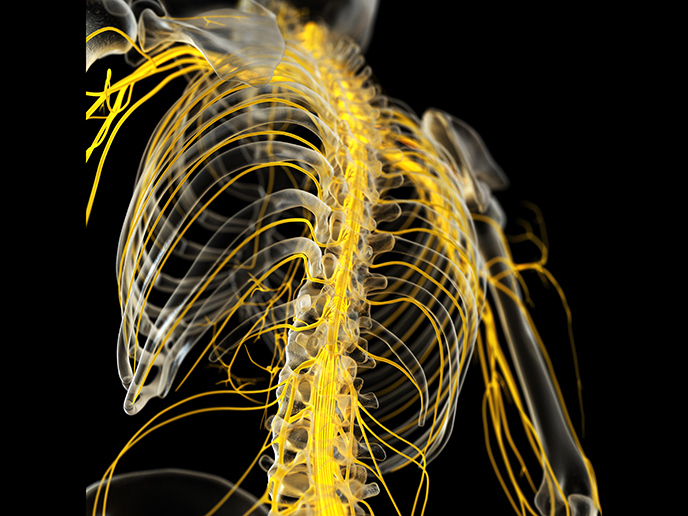Repairing an injured spinal cord using a stimulated nanoengineered scaffold
Our spinal cord is essentially a delicate cylindrical structure of cells and nerves that sends information between the brain and the rest of our body. If the spinal cord is damaged, this flow of information can be interrupted, if not completely cut off – which is why spinal cord injuries (SCIs) can be so devastating. Perhaps even more devastating is the fact that our central nervous system isn’t very good at regenerating, meaning that options for treating an SCI are extremely limited. But thanks to research such as that happening within the EU-funded NeuroStimSpinal(opens in new window) project, this could start to change. The project is developing a neural tissue engineered scaffold that, by combining fibrous and porous topographic cues, mimics the morphology of the native spinal cord. “Our goal is to remove the injured area of the spine and replace it with our scaffolding, allowing neural cells to restore communication,” explains Paula Marques, a researcher at the University of Aveiro(opens in new window) and NeuroStimSpinal project coordinator.
Graphene’s electrical conductivity and biocompatibility properties
Tissue engineered scaffolds are an important tool for regenerative medicine, providing structural support for cell attachment and eventual tissue development. The challenge, however, is finding the right material for the job. According to Marques, one material with significant potential for use with SCIs is graphene. “Graphene is a carbon-based nanomaterial with extraordinary properties, which our research group has been working with and developing into different types of applications for over 15 years,” she says. From this work, Marques noticed two key properties: electrical conductivity and biocompatibility. “These properties drew our attention to the development of biomaterials that could be electrically stimulated,” she adds. Since the neural tissue found in the spinal cord is electrically responsive, Marques saw an opportunity to explore the use of graphene-based scaffolding for treating SCIs. And so the NeuroStimSpinal project was born.
Applying an electric stimulation to the biomaterial
The first challenge the project addressed was to find a biomaterial that could be combined with graphene and built into a 3D structure. “One of our project partners(opens in new window) had developed a method for extracting an extracellular matrix from animal fat,” notes Marques. “Providing a set of biochemical clues, this natural matrix allows the cells to recognise the environment, which is an important first step towards achieving tissue regeneration.” Next, researchers looked at how to apply an electric stimulation to the biomaterial. “The big challenge here was first associating the extracellular matrix with the graphene in a way that was both easily reproducible and that did not introduce any type of toxicity to the material itself, and then applying a longitudinal electrical current through it,” remarks Marques.
Implantable device for regenerating neural tissues in patients with spinal cord injuries
Conducting tests using neural embryonic cells, researchers verified that these progenitor cells, which are not yet fully differentiated in the presence of this three-dimensional structure, are able to differentiate into neurons. Neurons are the main cells that give rise to the growth of axons, the long, threadlike fibre that connects nerve cells so they can communicate all along the spinal cord. “This demonstrates the potential for creating an implantable functional device comprised of a scaffold fabricated from a graphene-based material and an extracellular matrix that, in conjunction with electrical stimulation, that can regenerate neural tissue in patients with spinal cord injuries,” concludes Marques. Marques is confident that the scientific findings of the NeuroStimSpinal project have provided a solid foundation from which future projects can build and, ultimately, further advance our ability to treat SCIs.







